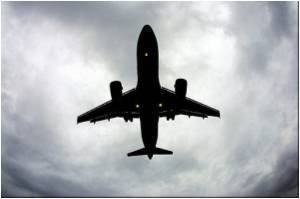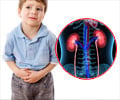BOSTON - The concepts now at the center of the health care quality movement, adopted in large part from the airline industry, should be used to standardize the processes and the equipment

"By contrast, in-flight medical emergencies occur frequently. Yet the kinds of approaches that have improved flight safety have not been extended to providing optimal care for passengers who become acutely ill while on board airplanes."
The authors note that despite 10,000 in-flight medical emergencies identified by European airlines over a 5-year period, each airline has its own reporting system and protocol. And while emergency medical kits are mandated to contain medications and equipment, actual kits vary by airline.
The US Federal Aviation Administration, which mandates that flight attendant training includes CPR and the use of automated external defibrillators, the FAA does not require standard curriculum or testing.
As a result, physicians responding to emergencies can face a broad array of challenges including cramped physical space, emergency kits whose contents are unfamiliar, inadequate, and poorly organized, and flight crews unaware of how best to assist the physicians.
Mattison and Zeidel offer a four-step plan to improve the treatment of passengers who become ill in-flight.
Advertisement
The authors also suggest that airlines solicit expert recommendations on the optimal content of first aid kits with the goal of creating a standard kit with identical elements available in identical locations on every flight.
Advertisement
Mattison and Zeidel also call for enhanced and standardized training for flight attendants, including the clear obligation that a single flight attendant is assigned during emergencies and stay nearby until the patient is safe.
Finally, the authors recommend flight crew communication with ground-to-air medical support should be standardized and available on all flights when there are no health care professionals available.
The authors acknowledge the lack of information on outcomes of in-flight emergencies makes it impossible to quantify the past and current quality of in-flight medical care.
"Experience in the systematic quality improvement in health care, as well as the success of the airline industry in improving flight safety, suggests that standardizing the emergency medical kits on planes and the training and expectations of flight attendants should improve the chances that passengers who become ill, in flight will have the best possible outcomes."
Source-Newswise









